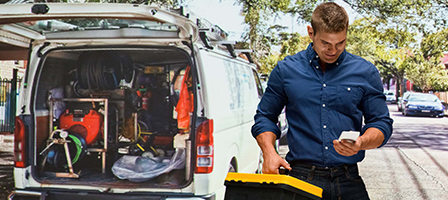RECORDKEEPING TIPS TO KEEP THE IRS AWAY
Article Highlights:
- Tax Recordkeeping Tips
- Receipts
- Auto Deductions
- Gifts
- Business Equipment
- Ordinary and Necessary
- Meals & Lodging
- Entertainment
- Home Office
With the ever-increasing complexity of our tax system, it is commonplace for many small businesses to make mistakes with bookkeeping and filing. One way to avoid making errors is to be aware of the most commonly encountered pitfalls. Here are some tips to help keep the proper records.
- Receipts – Even though the IRS does not require receipts for meal and entertainment expenses of less than $75, it is nevertheless wise to hang onto them. There is no better documentation than a credit card receipt since it has all the expense information required. All you need to do is write on the slip the purpose of the event, the individual you were with, and your business relationship with that person.
- Auto Deductions – Generally, small businesses use either the actual expense method or the optional mileage method of deducting the business use of a vehicle, and both must account for any personal use of the vehicles, including commuting. When using the actual expenses method, the deducible business portion of the expenses is determined by multiplying the total expenses by the percentage of business use, which is found by dividing the business miles driven by the total miles driven. When using the optional mileage method, the business miles are multiplied by the IRS published standard mileage rate, which is 56 cents per mile for 2014. So, regardless of the method used, make sure you keep track of the total and business use miles for the year since it is required for either option.
- Gifts – Do not overspend on gifts to clients and business associates. The IRS will allow a deduction of only up to $25 worth of gifts to any individual per year. Being too generous will cost you. With only that first $25 per recipient considered a deductible business expense, the rest will be nondeductible. For deductible gifts, be sure to keep a copy of the purchase receipt and note on it the business purpose for making the gift or the benefit you expect to receive, as well as the name of the person to whom you gave the gift, his/her occupation or title, or some other designation that will establish your business relationship to the individual.
- Business Equipment – Since equipment is considered a capital expenditure, it has to be depreciated. That is why lumping equipment together with supplies is not a good idea. This is true even when you elect to expense equipment purchases under Sec. 179. If the purchases are not reported properly, the IRS could rule that the expense was improperly characterized. If that is the case, you would not be entitled to the deduction claimed on your return. There could be other repercussions, leaving you with no current deduction at all.
- Ordinary and Necessary – To be deductible, an expense must be ordinary and necessary. An expense is “ordinary” if it is customary and conventional for the taxpayer’s line of business. A “necessary” expense is helpful in the taxpayer’s business; but it need not be indispensable.
- Meals and Lodging – When traveling for business, lodging is 100% deductible but the away-from-home meals deduction is limited to 50% of the cost. So, if the meals are charged to a hotel room, they must be accounted for separately, and keeping a copy of the statement from the hotel that shows the charges, as well as a credit card receipt or other payment receipt, is advisable.
- Entertainment at Sports Events and Theaters – When entertaining customers at sporting events and theaters, the deduction is limited to 50% of the face value of the ticket. The cost of the entertainment must be “directly related to” or “associated with” business or the production of income.
- Home Office Deductions – There are two methods for deducting the business use of a home. One is the conventional method of prorating the expenses (with some limitations) of the home by multiplying the allowable expenses times the business use square footage divided by the total square footage of the home. The other method, referred to as the simplified method, allows $5 per square foot deduction (maximum 300 square feet) without having to keep records of expenses. Both methods have the same eligibility requirements.
Every business is unique, so if you need assistance in setting up your recordkeeping system or need further clarification on any of the topics discussed, please call this office.






Leave a Reply
Want to join the discussion?Feel free to contribute!